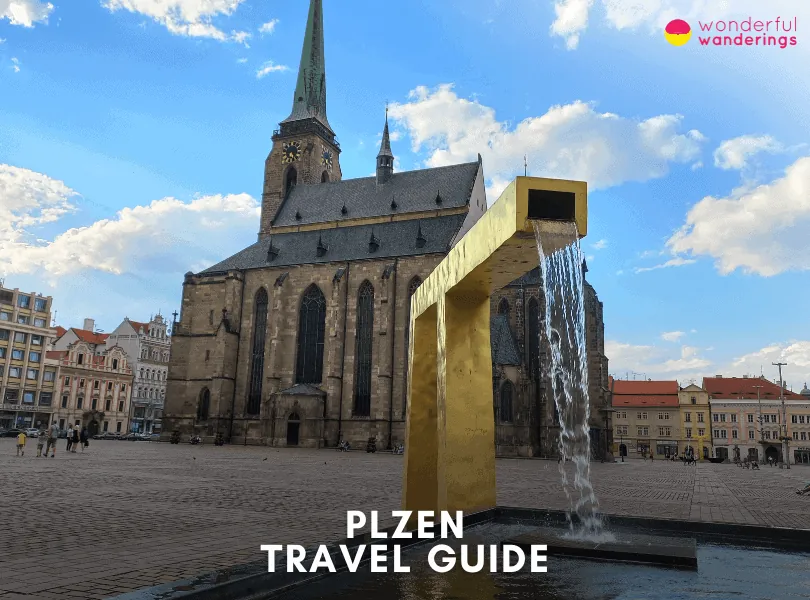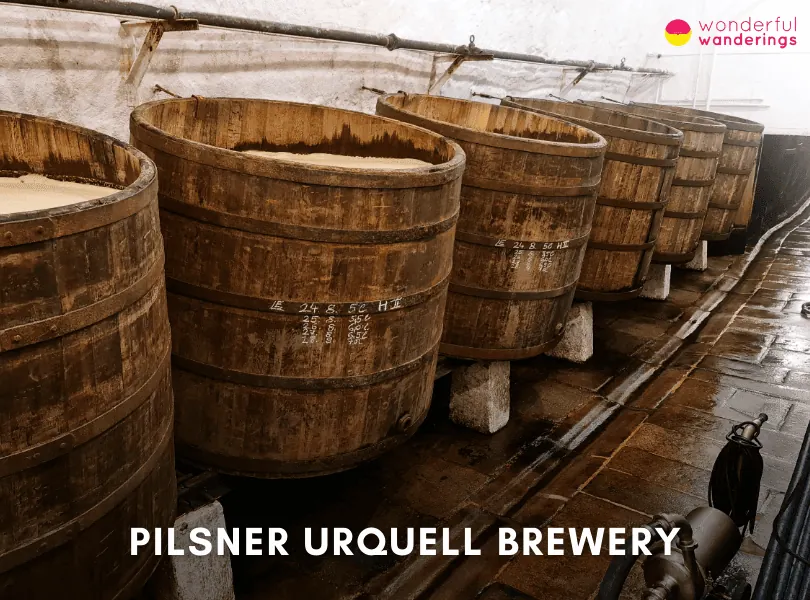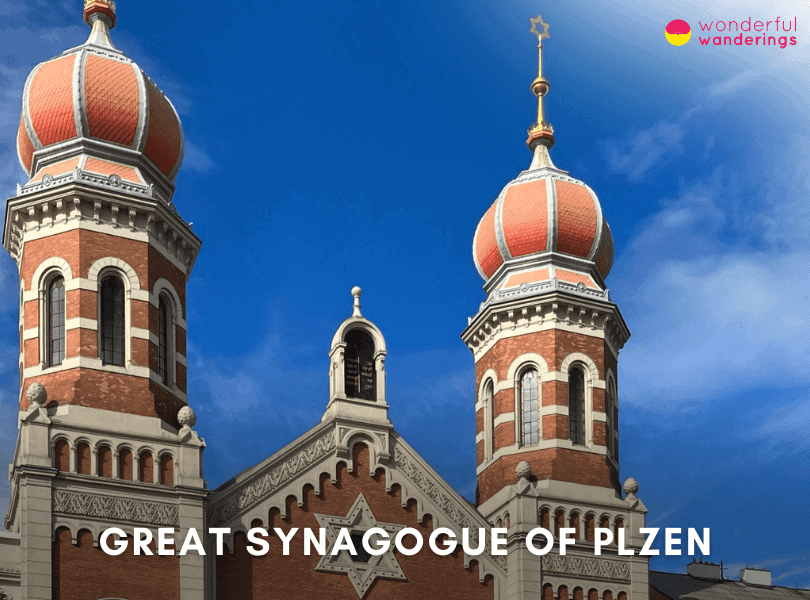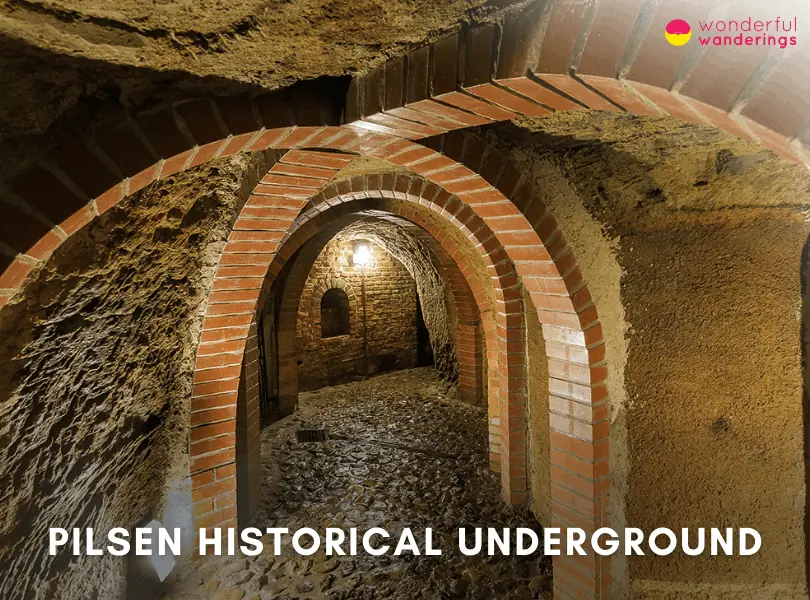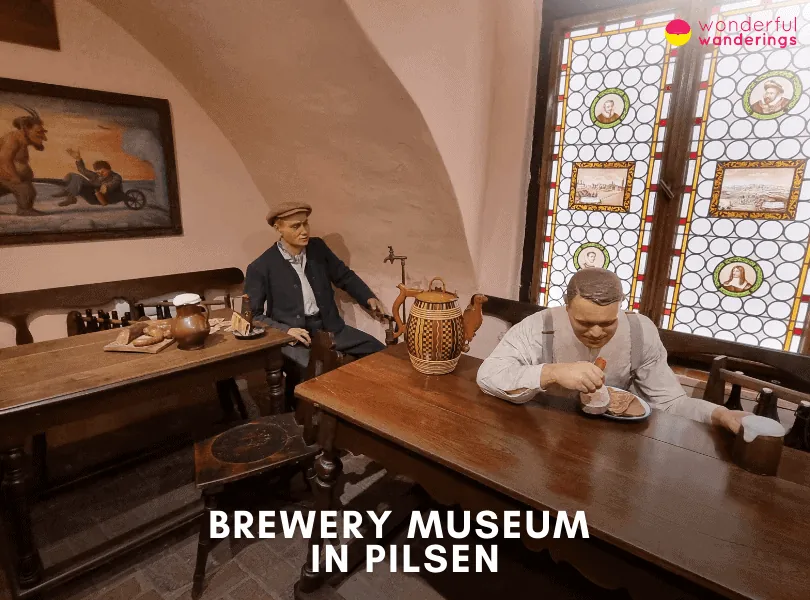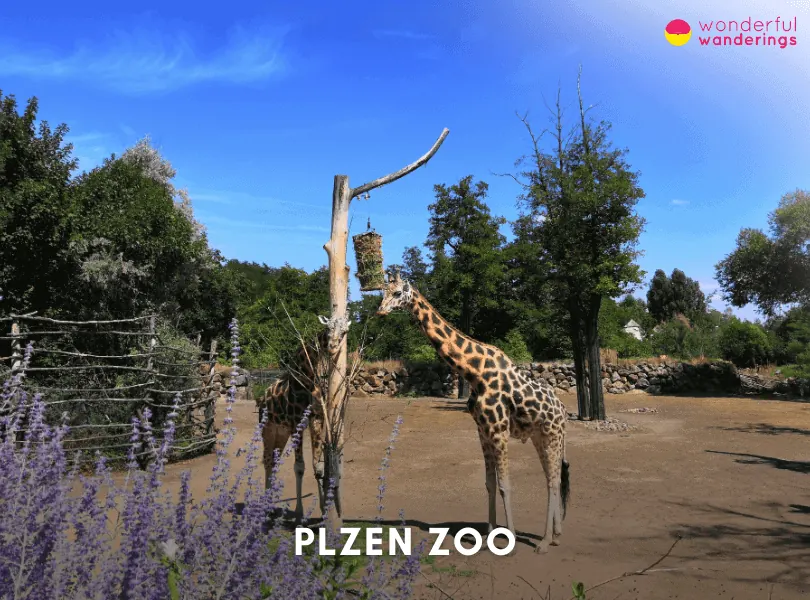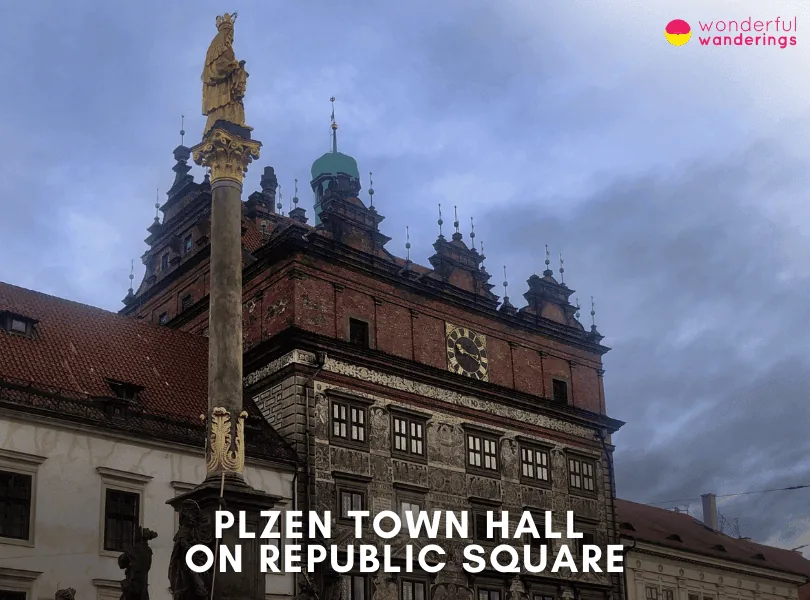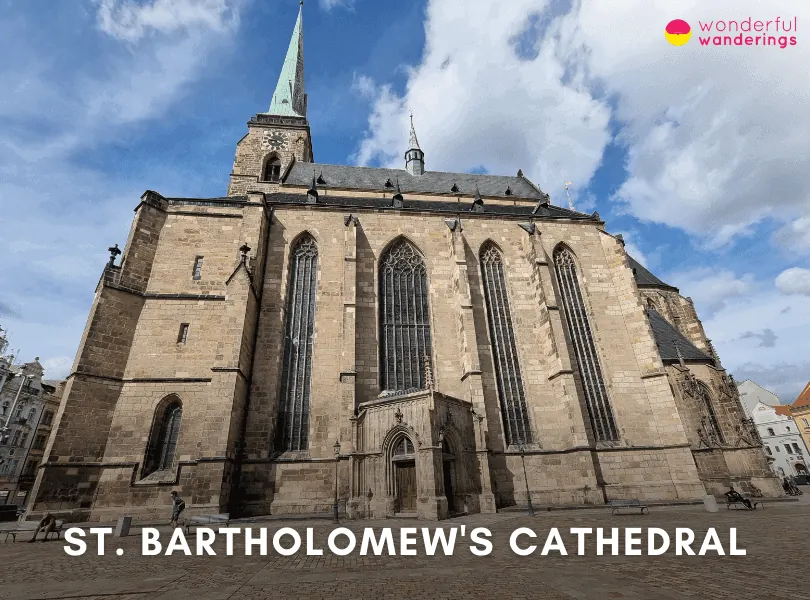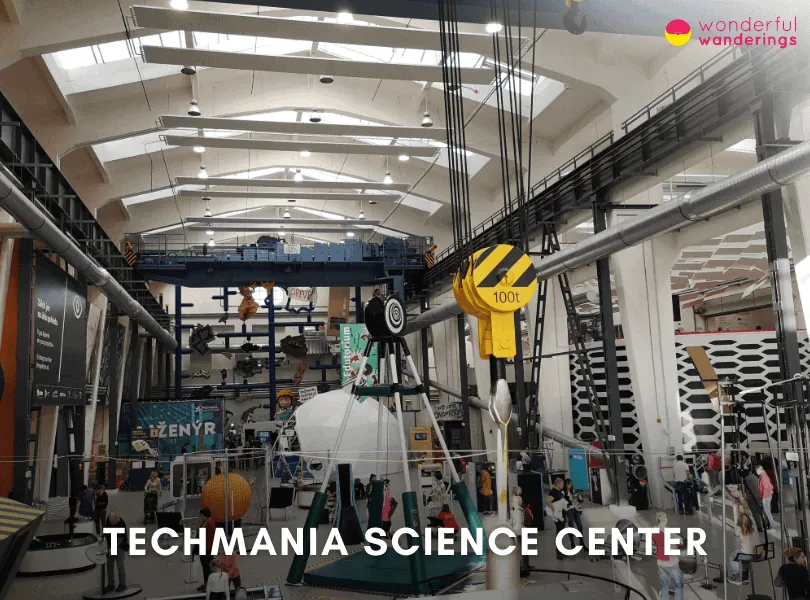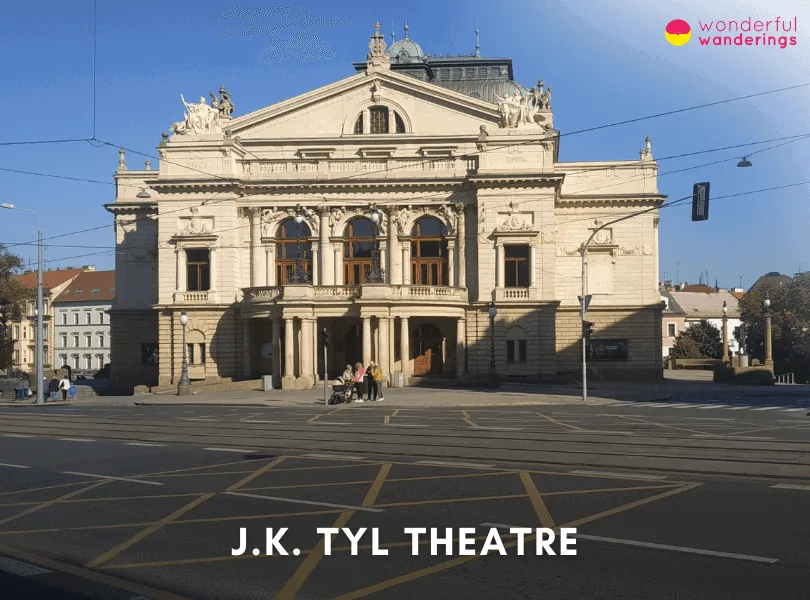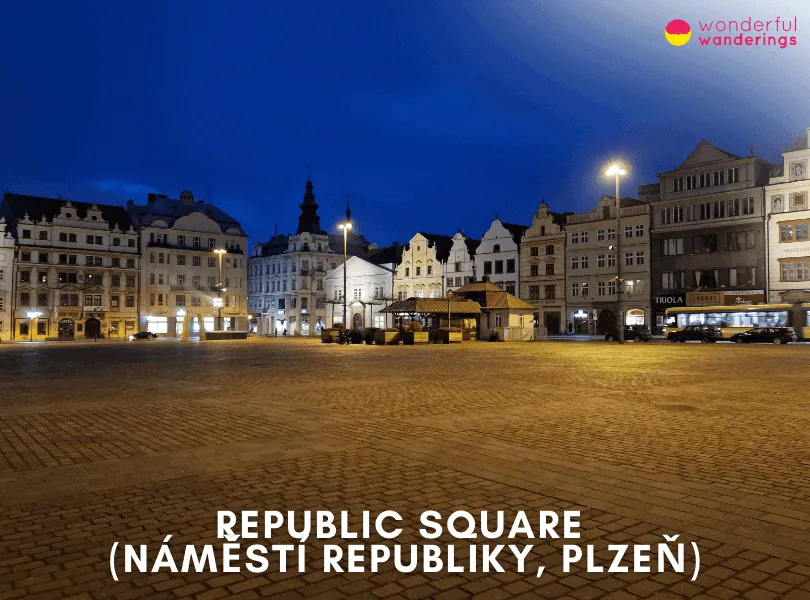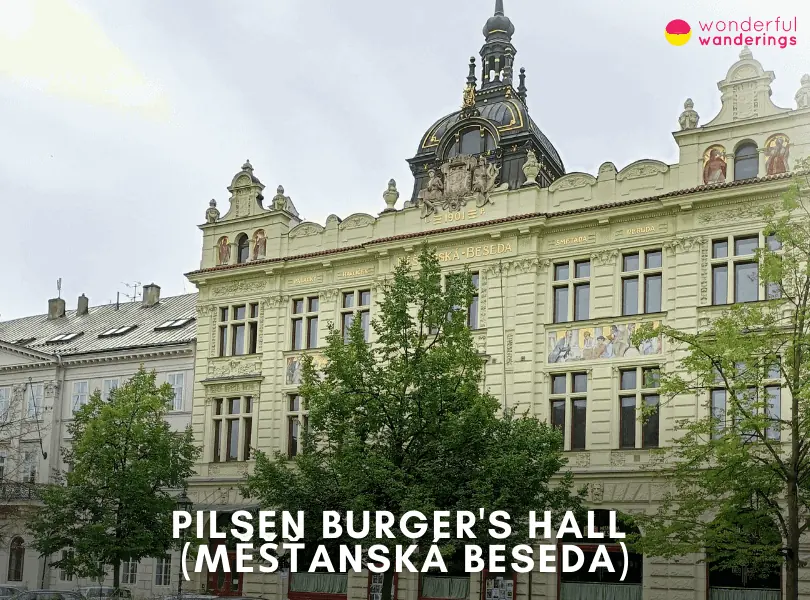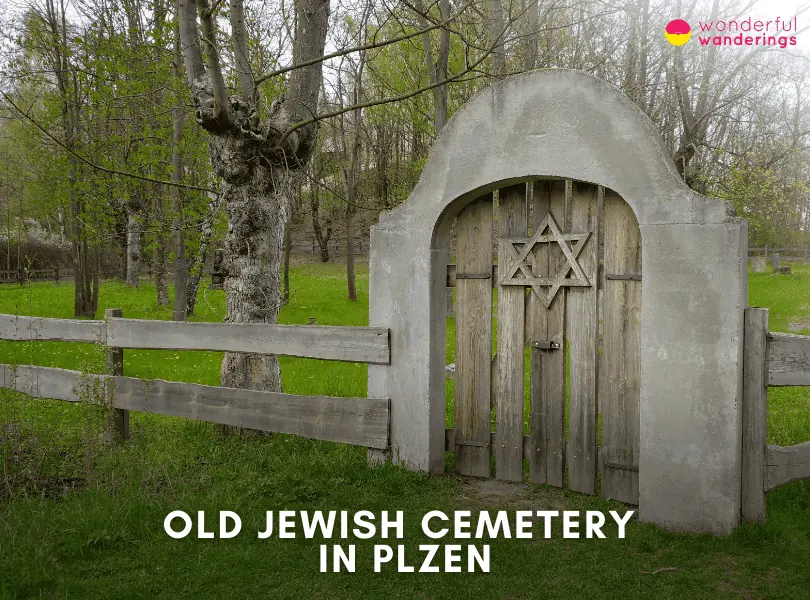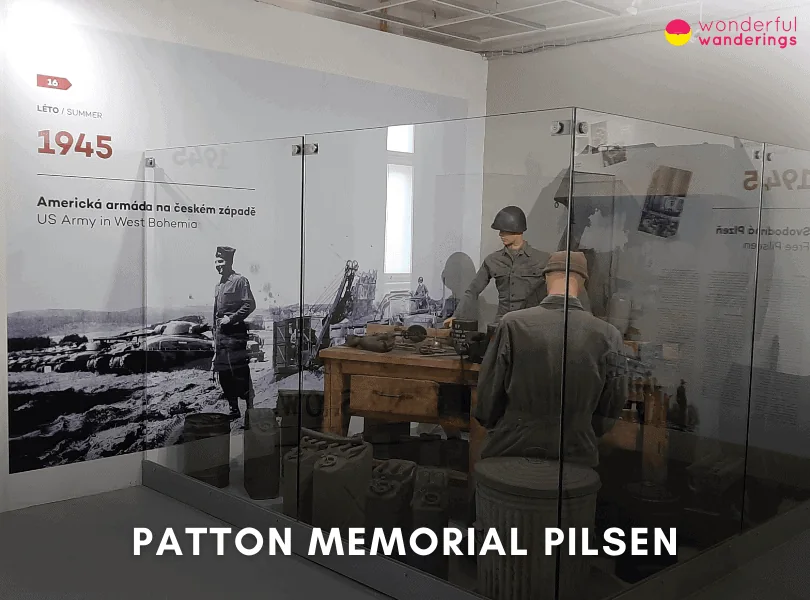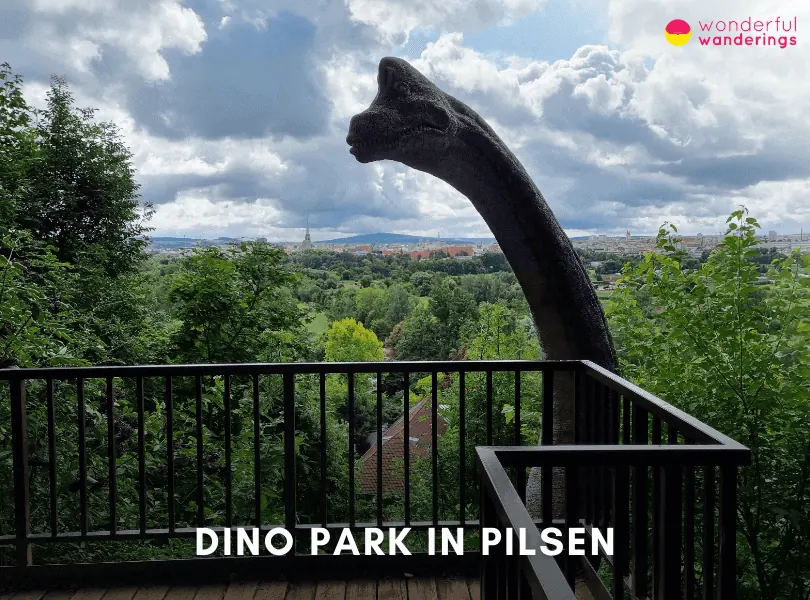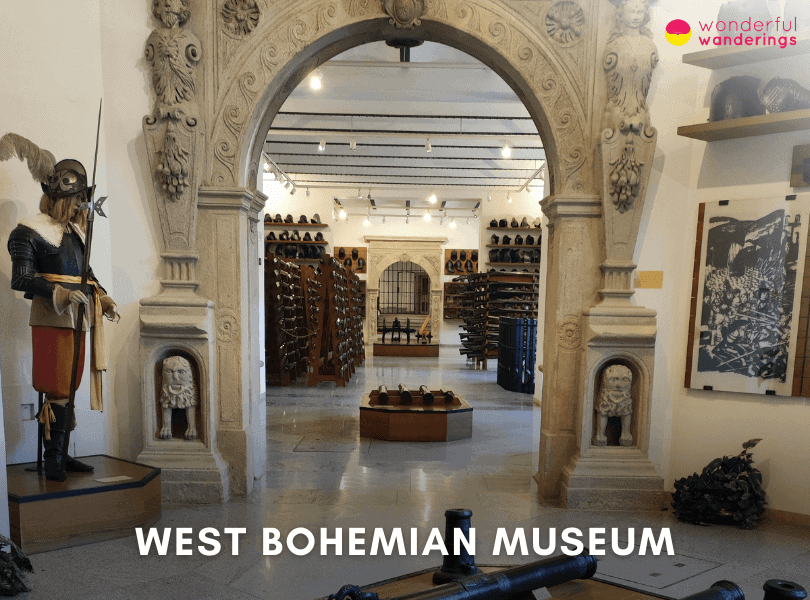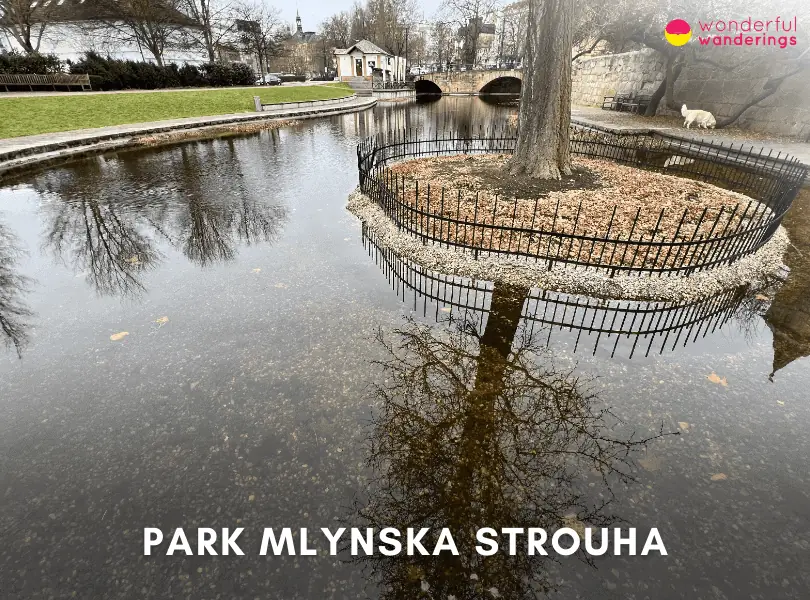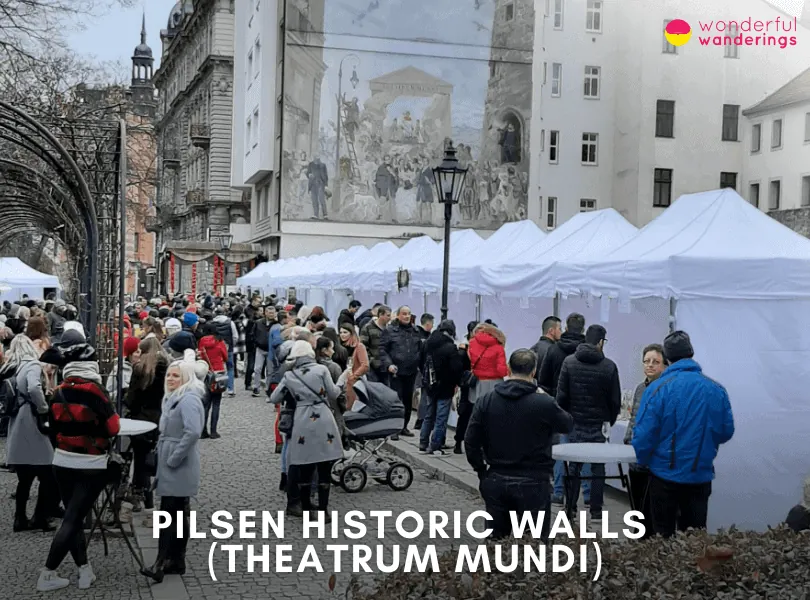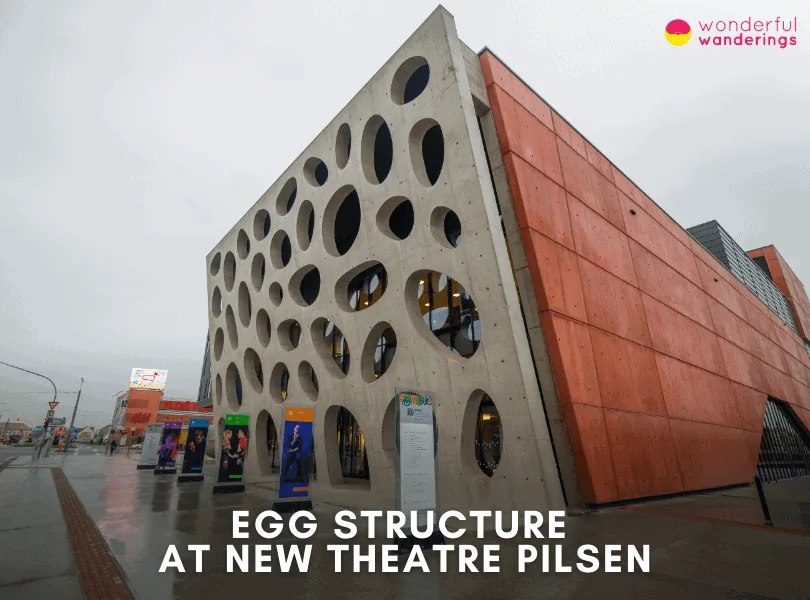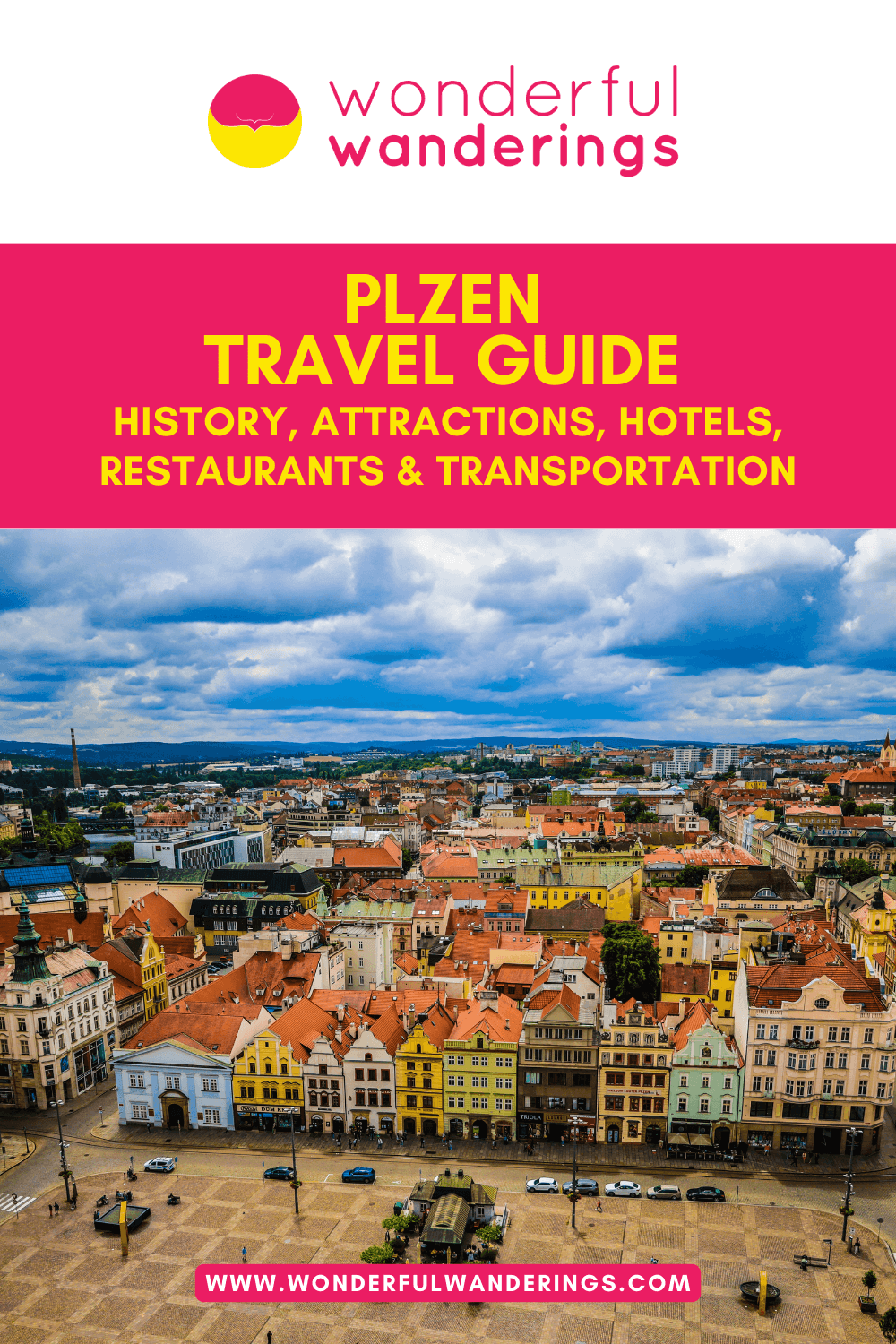Plzeň, often pronounced as “Pilsen” in English, is a historic city in the western part of the Czech Republic. With a history of over a thousand years, Plzeň has grown to become the fourth most populous city in the country, with a population of approximately 607,797. Plzeň’s history is deeply intertwined with the development of the Pilsner beer, which is one of the world’s most famous and beloved beer styles. In 1842, a Bavarian brewer named Josef Groll crafted the first batch of Pilsner beer in Plzeň, giving rise to a brewing tradition that continues to thrive today. This momentous event forever linked the city’s name with the iconic lager.
The official language spoken in Plzeň is Czech, reflecting the wider linguistic landscape of the Czech Republic. However, like many European cities, Plzeň has its distinct dialect known as the Plzeň dialect (plzeňské nářečí), which is influenced by regional factors and features some Germanisms from Northern Bavarian dialects. Plzeň experiences a temperate climate characterized by four distinct seasons. Summers, from June to August, are generally warm, with average high temperatures around 23 to 25°C (73 to 77°F), while winters, from December to February, are cold, with temperatures often hovering around freezing or occasionally dropping below zero. Spring and autumn offer milder temperatures, making them pleasant times to explore the city and its surroundings.
In addition to its beer heritage, Plzeň possesses numerous historical and cultural attractions. The city’s historic center is a testament to its enduring past, with well-preserved architecture, including Gothic and Baroque buildings. The city’s landmarks include the impressive St. Bartholomew’s Cathedral, the Great Synagogue and the colorful Renaissance-style Town Hall. Furthermore, Plzeň’s rich cultural scene features museums, galleries and theatres celebrating the city’s artistic and historical heritage.
Listed below are the things to do in Plzeň.
- Pilsner Urquell Brewery. The Pilsner Urquell Brewery, founded in 1839 in Plzeň, Czech Republic, created the first pilsner beer in 1842. Visitors can tour the historic brewery complex, see underground cellars and learn about the beer’s history. Visitors can sample a fresh, unpasteurized Pilsner Urquell straight from the traditional wooden barrels at the end of the tour.
- Great Synagogue of Plzen. The Great Synagogue of Plzeň, built in 1888 and 1892, is the second-largest synagogue in Europe. The Moorish-Romanesque temple once held 2,500 worshippers. The interior is beautifully decorated with ornate paintings, scrollwork and stars of David. The Great Synagogue functions more as a concert venue and exhibition hall rather than as a primary house of worship. Visitors can take a guided tour to appreciate the architecture and learn about the history of the local Jewish community.
- Pilsen Historical Underground. The 14th-century Pilsen Historical Underground consists of 20 kilometers (12 miles) of tunnels and cellars beneath Old Town. Visitors can explore the medieval corridors, see artifacts and learn about the network’s purpose over time. Tours provide a vivid glimpse into medieval Pilsen. The Pilsen Historical Underground cellars stored food, housed craft workshops, brewed beer and provided refuge during wars and fires.
- Brewery Museum in Pilsen. The Brewery Museum is housed in a 15th-century brewery building near Pilsen’s main square. The exhibits are displayed across a medieval malthouse and brewery from the 1400s. The museum features a collection of beer mugs, tankards and bottles from across history, a 19th-century pub interior recreation and curiosities like the world’s smallest 1cm tall beer mug.
- Plzen Zoo. Plzen Zoo, established in 1926, features over 1,200 species across geographic zones representing different continents. Highlights include rare animals like rhinos and Komodo dragons. Visitors can view wildlife, walk through botanical gardens and visit the children’s zoo, aquarium and rainforest pavilion.
- Plzen Town Hall on Republic Square. The Renaissance Plzen Town Hall overlooks Republic Square. Its ornate sgraffito facade is adorned with coats of arms and history motifs. The Town Hall features a 3D model of the historic city center. The entrance hall and model exhibition are open to the public daily, free of charge.
- St. Bartholomew’s Cathedral. St. Bartholomew’s Cathedral, constructed in the 13th to 16th centuries, is home to Gothic architecture and Pilsen’s most valued treasure, a 14th-century statue of the Virgin Mary. Visitors can tour the cathedral, view artwork and climb the 102-meter tower for panoramic city views.
- Techmania Science Center. Techmania Science Center has 7,000 square meters of interactive science exhibits across physics, chemistry, space, nature and technology. Attractions include the country’s first 3D planetarium. The center offers exhibits, films, presentations and workshops tailored for visitors of all ages.
- JK Tyl Theatre. JK Tyl Theatre is renowned as Pilsen’s leading professional theatre and most culturally significant performing arts landmark. Its three stages host 600 diverse performances per year, including drama, opera, ballet and musical theater. Visitors can experience high artistic standards by attending a show or backstage tour.
- Republic Square (Náměstí Republiky, Plzeň). Republic Square (Náměstí Republiky, Plzeň) in central Pilsen has been an important gathering place since medieval times. Visitors can admire the decorative historic facades lining the square, visit shops and cafés or explore the surrounding sights like the Town Hall, Cathedral and Great Synagogue.
1. Pilsner Urquell Brewery
The Pilsner Urquell Brewery is located at U Prazdroje 7 in the city of Plzeň (Pilsen), Czech Republic. It was founded in 1839 and opened in 1842, making it one of the oldest breweries in the world still in operation. Pilsner Urquell Brewery created the first golden “pilsner” lager in 1842 under brewmaster Josef Groll. This lighter, crisper, paler beer completely revolutionized brewing methods and introduced pilsner-style lagers across Europe.
Visitors can take a guided walking tour of the massive, town-sized Pilsner Urquell complex. The brewery highlights include old cellars dug deep below the ground, some still used for beer fermentation and storage. Exhibits detailing the history of the brewery and the Pilsner Urquell beer brand. Visitors can sample a fresh, unpasteurized Pilsner Urquell straight from the traditional wooden barrels at the end of the tour. The tour is perfect for adults and older children interested in beer and brewing history. Those under 18 cannot sample the beer but can still enjoy the cellars and exhibits. Regular admission costs €15 ($16, £12) for adults, with discounts for students, seniors 65+ and families. Guided tours in English are available.
2. Great Synagogue of Plzen
The Great Synagogue of Plzeň at Sady Pětatřicátníků 11 in the city of Plzeň (Pilsen) has a history stretching back to the late 19th century. The construction of the Synagogue of Plzen began in 1888 and was completed in 1892 in a Moorish-Romanesque architectural style.
The Great Synagogue of Pilsen is the second-largest synagogue in Europe and the third-largest in the world. This building, with its twin towers, could hold up to 2,500 worshippers. The interior is beautifully decorated with ornate paintings, scrollwork and stars of David.
The Great Synagogue functions more as a concert venue and exhibition hall rather than as a primary house of worship. Visitors can take a guided tour to appreciate the architecture and learn about the history of the local Jewish community. Concerts, art exhibits and cultural events are also frequently held inside. People of all ages and interests can enjoy taking a tour or attending an event. General admission tickets to access the Great Synagogue cost €2 ($2, £1)
There are reduced prices for students and seniors. Additional guided tours and concerts may have separate pricing. The venue is open year-round except Saturdays and Jewish holidays.
3. Pilsen Historical Underground
The Pilsen Historical Underground is located at Veleslavínova 6 in the city of Pilsen, Czech Republic. The construction of the underground tunnels and cellars began in the 14th century, not long after Pilsen was founded in 1295. A total of 20 kilometers (12 miles) of corridors were dug beneath the Old Town area, making it one of the most extensive historical underground systems in Central Europe.
The Pilsen Historical Underground cellars stored food, housed craft workshops, brewed beer and provided refuge during wars and fires. There is an advanced system of wells, drainage tunnels and sewers. Many everyday artifacts from medieval times have been unearthed. Visitors can explore the 800 meters of these historic corridors and see a functioning 16th-century water wheel and an 1847 pumping machine. Visitors walk through the tunnels while learning about the network’s construction and purpose. The atmosphere provides a vivid glimpse into medieval Pilsen. Adults receive a beer voucher for Pilsner Urquell at the end of the tour. The underground tour is suitable for adults and older children interested in medieval history. Sturdy shoes are recommended as the paths are uneven. Tours in English must be booked in advance online.
4. Brewery Museum in Pilsen
The Brewery Museum in central Pilsen is inside an original 15th-century brewery building at Veleslavínova 6, near the main square and Old Town. The museum is housed in one of the only surviving medieval brewery buildings in Pilsen. It has retained its Gothic and Renaissance architecture. The exhibits are displayed across a medieval malthouse and brewery from the 1400s. Highlights include the Gothic malthouse with its stone-soaking vats, historic kilns and rollers used in the malting process. There is a collection of beer mugs, tankards and bottles from across history, a 19th-century pub interior recreation and curiosities like the world’s smallest 1cm tall beer mug.
Self-guided tours are available anytime during opening hours. Guided tours are offered for groups of 10+ people for an additional fee. The museum connects to the Pilsen Historical Underground tunnels, which can be visited with a combo ticket. Visitors over age 18 receive a voucher for a 0.3L tasting of Pilsner Urquell beer at select Pilsen restaurants (included with admission). There is also a beer shop onsite. The museum is open daily from 10 am to 6 pm, from April to September and 10 am to 5 pm from October to March.
5. Plzen Zoo
The Plzen Zoo (Zoologická a botanická zahrada města Plzně) is located at Pod Vinicemi 9 in the city of Plzeň. Its history goes back to 1926 when the nature conservation group IRIS established a small zoo near the Radbuza River. The zoo moved to its current 21-hectare premises and merged with the city’s botanical garden in 1981.
Plzen Zoo features over 1,200 species and has the largest collection of any Czech zoo. Rare species like Komodo dragons, pygmy hippos, giraffes and rhinos draw visitors. The zoo is divided into geographic zones representing different continents and biomes, with the animals displayed in naturalistic enclosures. Special attractions include a nocturnal house, aquarium, indoor rainforest pavilion and a hands-on children’s zoo. Visitors of all ages can see wildlife from around the world, walk through the grounds and botanical gardens, grab a snack at one of the zoo’s restaurants or take in an eagle flying demonstration. Family tickets make it an affordable day out. The zoo is open year-round except Christmas and New Year’s Days, from 8 am to 7 pm peak season and 9 am to 5 pm in winter.
6. Plzen Town Hall on Republic Square
The Renaissance Town Hall is located in Republic Square (Náměstí Republiky), Plzeň. It was built between 1554 and 1559 according to plans by Italian architect Giovanni de Statia. The Town Hall is renowned for its ornate sgraffito facade adorned with Bohemian coats of arms and motifs from the history of Plzeň. Inside is a large 3D model of Plzeň’s historic city center. The building has served as Plzeň’s city hall since the 16th century.
Plzen Town Hall Renaissance architecture and facade have been well-preserved. The intricate plasterwork is considered some of the finest in Central Europe. Visitors can admire the exterior architecture and artwork. Visitors can explore the entrance hall (“Mazhaus”), which contains the 3D wooden model of historic Plzeň. This offers an interactive way to visualize the old city. The Town Hall entrance hall is open to the general public daily from 8 am to 6 pm free of charge. The model city exhibition is best for visitors of all ages interested in architecture, history or urban design. Guided tours may also be available through the Pilsen Tourist Information Centre.
7. St. Bartholomew’s Cathedral
St. Bartholomew’s Cathedral is located in Republic Square (Náměstí Republiky), Plzeň. Its Gothic architecture was constructed in the late 13th century and was completed in the early 16th century. It became a cathedral when Pope John Paul II established the Diocese of Plzeň. The cathedral’s tower is the tallest church tower in the Czech Republic at 102 meters (335 ft).
St. Bartholomew’s Cathedral features Gothic architecture and has a crucial role in Pilsen’s history. The cathedral contains the city’s most valued treasure, a 14th-century statue of the Virgin Mary known as the “Pilsen Madonna”. Its ornate Sternberg Chapel features a rare Art Nouveau Czech Altar. The cathedral houses Renaissance paintings and stained glass windows and hosts concerts with its impressive acoustics. Visitors can tour the cathedral daily, view the architecture and artwork and climb 301 steps to the top of the tower. The observation deck offers panoramic views of Pilsen. Guided tours of the interior are also available. The cathedral appeals to tourists interested in religious sites, architecture, history and city views. Entrance to the cathedral is free, while access to the tower costs €2 ($2, £1) for adults.
8. Techmania Science Center
The Techmania Science Center at U Planetária 1, 301 00 Plzeň, was established in 2005 through a partnership between Škoda Transportation and the University of West Bohemia. The science center opened to the public in 2008 with the goal of getting people, especially youth, more interested and involved with science and technology.
Techmania has an extensive array of interactive science exhibits laid out across 7,000 square meters of former Škoda factory halls. Visitors can explore principles of physics, chemistry, space, nature and more through hands-on activities. Techmania features the country’s first 3D planetarium with space films and presentations. The center hosts science shows, events and workshops and has exhibits tailored for visitors as young as three years old up through adults.
Visitors can experiment with exhibits on electricity, magnetism, light, sound, mechanics and various phenomena. The 3D planetarium offers space films and animations. There are also presentations on Škoda’s history. Daily science shows demonstrate experiments with fire, liquids and other chemical reactions. Techmania appeals most to families, school groups and anyone with an interest in science and technology.
9. J.K. Tyl Theatre
The J.K. Tyl Theatre at Smetanovy sady 1129/16 in Pilsen is a neo-Renaissance-style building that was constructed between 1899 and 1902 according to designs by architect Antonín Balšánek. The theatre is considered one of Pilsen’s most culturally significant landmarks, the theatre has three stages – the Grand Theatre, New Theatre and Small Stage – that host 600 performances each year spanning various genres, including drama, opera, ballet and musical theater.
J.K. Tyl Theatre has a reputation as the leading professional theatre in the Pilsen region. Its resident acting troupe and artistic ensembles regularly earn acclaim in national theatre competitions and festivals. The theatre is renowned for showcasing innovative dramaturgy and contemporary works alongside classical Czech and international productions. Visitors can experience the theatre’s high artistic standards by attending a performance or taking a backstage tour to access areas normally off-limits to the public. The variety of shows at J.K. Tyl appeals to diverse audiences. Opera and ballet productions captivate mature visitors, while musicals and puppet shows entertain younger crowds. Visitors of all ages and interests can find an engaging production to enjoy at the J.K. Tyl Theatre, recognized as a leading platform for the performing arts in Czechia.
10. Republic Square (Náměstí Republiky, Plzeň)
Republic Square (Náměstí Republiky, Plzeň) is the historic center of Plzeň, between the Great Synagogue and St. Bartholomew’s Cathedral. The Republic Square Upper Market has been an important gathering place in the city since the Middle Ages. It was rebuilt in grand style during the 19th century as the central square was damaged during the 17th-century wars.
Republic Square (Náměstí Republiky, Plzeň) is lined with beautiful historic buildings like the Town Hall, the old city pharmacy and noble houses. Visitors can admire the decorative facades, visit shops and cafés or explore the surrounding sights. The square hosts concerts and events during weekends. Republic Square appeals to all types of visitors, shoppers, families, couples and those simply wanting to experience an authentic European square. There is no cost to enter the square. No trip to Plzeň is complete without visiting the Republic Square.
11. Pilsen Burger’s Hall (Měšťanská beseda)
Pilsen Burger’s Hall, known as Měšťanská beseda, is located at Kopeckého sady 59/13 in the city of Pilsen. It was constructed in 1901 in Neo-Renaissance style with lavish Art Nouveau decor. This cultural center has served as a venue for balls, dances, concerts, theater performances and other events for over a century.
Burger’s Hall has a reputation as the leading cultural institution in Pilsen. Its elegant venues, like the Grand Hall, Art Nouveau café, Jonáš Theater and Beseda Cinema Club, host over 2,000 events per year, ranging from film festivals to philharmonic concerts to touring Broadway-style musicals. Visitors can experience the history and glamour of Burger’s Hall by attending a performance or taking a guided tour to admire details like the ornate gilded décor and monumental murals throughout the interior. The variety of arts programming at Burger’s Hall appeals to diverse audiences of all ages. Festival showings, theater productions, live music and cinema screenings offer engaging options for adults, while puppet shows and workshops engage younger crowds. Ticket prices vary by event, with guided tour tickets that cost €4 ($4, £3).
12. Old Jewish Cemetery in Plzen
The Old Jewish Cemetery at Lidická 474/6 in the north end of Plzen was founded around 1856 when the previous medieval Jewish cemetery was abolished. The cemetery was the main Jewish burial ground until 1905. Only remnants with a few gravestones exist today within a small walled area after the cemetery was destroyed by the Communist regime in 1986.
The Old Jewish Cemetery was one of the oldest visible traces of Plzen’s Jewish community, which dates back to the 14th century and represents an ancestral link to the town’s Jewish past. The scattered stones and plaques are inscribed with the names of those who died and served as a memorial to the community that was largely destroyed during the Holocaust. Visitors can reflect on the lives memorialized and contemplate the cemetery’s complex past, from its active years in the late 19th century to the postwar decades when it fell into disrepair and neglect. The sparsely visited cemetery best suits adults seeking a space for solitude and commemoration. The Old Jewish Cemetery allows visitors to pay tribute to the resilience of Plzen’s Jewish people.
13. Patton Memorial Pilsen
The Patton Memorial Pilsen is a museum located at KD Peklo, Pobřežní 10, 301 00 Plzeň 3-Vnitřní Město. It was established in 2005 on the 60th anniversary of Pilsen’s liberation by the U.S. Army under General George S. Patton at the end of World War II. The majority of the 1,000 exhibits at the Patton Memorial come from private collections and present visitors with facts about Pilsen’s liberation that were suppressed during the communist era.
Patton Memorial features the journey of Patton’s Third Army from the Normandy landings through the Battle of the Bulge and onward to liberate Pilsen and Western Bohemia in 1945. The museum features artifacts directly from battlefields as well as gifts from American veterans and their families. There are exhibits detailing the post-war reconstruction efforts of the U.S. forces. Visitors can view displays of soldier’s equipment and arms, documents and photographs and relics left behind by the troops. The exhibits utilize sound effects and authentic film footage to give an immersive experience. The Patton Memorial appeals the most to history enthusiasts interested in learning about World War II and Pilsen’s liberation. General admission fees cost €4 ($4, £3). for adults. Guided tours can also be arranged.
14. Dino Park in Pilsen
Dino Park, located at Nad ZOO 1 in the Bolevec area of Pilsen, is the oldest dinosaur-themed park, founded in 2003. Dino Park features life-sized models of prehistoric animals from the Mesozoic era. These models precisely depict the anatomy and surface of dinosaur bodies.
Dino Park aims to bring these mysterious prehistoric creatures to life in an immersive and engaging environment.
Visitors can walk through the wooded park to view over 30 animated dinosaur scenes depicting these prehistoric beasts in their natural habitats. The largest model is of an Apatosaurus, a 23-metre long, 7-metre tall herbivore. The Dinopark includes a 3D cinema, educational trail and children’s paleontology playground where the children can experience the basics of paleontology work. Dino Park Pilsen appeals most to children and their families. Dino Park brings these mysterious prehistoric creatures to life in an immersive and engaging environment. Dinopark tickets are discounted when purchased together with access to the Pilsen Zoo.
15. West Bohemian Museum
The Museum of West Bohemia at Kopeckého sady 2, 301 00 Plzeň was established in 1878 as the Municipal Museum for Pilsen and West Bohemia. Its monumental Neo-Renaissance building was constructed between 1893 and 1902 and houses over 2 million artifacts, making it one of the largest museums in the Czech Republic.
The Museum of West Bohemia presents the cultural, scientific and natural history of West Bohemia and central Europe. Its diverse collections include medieval arms and armor, an art nouveau library, archaeological finds, ethnographic displays and scientific collections in fields like paleontology, zoology and botany. Visitors can explore exhibits on the history of Pilsen, view Gothic weaponry, see how people lived in past eras and examine unique regional artifacts.
Visitors to the Museum of West Bohemia can tour four permanent exhibitions on municipal armory, archaeology, history and applied arts. There are opportunities to try weaving on a vertical loom replica or grinding grain on a quern in the archaeology section. The museum appeals most to history and culture enthusiasts, especially those interested in Bohemian heritage. The museum is ideal for families, couples and solo travelers.
16. Park Mlynska Strouha
Park Mlynska Strouha is located at Anglické nábřeží in Pilsen, Czech Republic, along Radbuza River. The park was established in the 1990s through revitalization efforts to convert the polluted riverbanks into a public green space. Its name comes from the historic mill races or “strouhas” that once operated watermills in the area.
Park Mlynska Strouha has a landscape and facilities for recreation. Visitors can walk or jog on trails shaded by trees, relax on benches and grassy areas or enjoy views of the Radbuza’s course through the park. The mill races have been restored and now host populations of fish, waterfowl and other wildlife. There is also an educational trail with information panels on the history, flora and fauna. Family-friendly attractions include playgrounds, an outdoor fitness corner, petanque and beach volleyball courts and boat rentals on the mill pond. The park appeals most to nature lovers, families with children and those looking to relax outdoors. Its central location makes it easily accessible to locals and tourists. There is no admission fee, so the park and its amenities can be enjoyed at no cost year-round during open hours.
17. Pilsen Historic Walls (Theatrum Mundi)
The Pilsen Historic Walls, known as Theatrum Mundi, are located at Křižíkovy sady park between Dřevěná and Zbrojnická streets in the center of Pilsen. These remaining parts of the former city walls date back to when Pilsen was a fortified settlement founded at the end of the 13th century. The stone walls protected the city for centuries until 1618, when Pilsen was first conquered during the Thirty Years’ War, leading to the gradual destruction of the walls over the next centuries.
Pilsen Historic Walls features the Theatrum Mundi mural, depicting famous personalities from the city’s history. The 200 square-meter wall painting shows figures like King Wenceslaus II, composer Josef Kajetan Tyl and industrialist Emil Škoda. It has become an iconic spot for photos as well as a backdrop for open-air theatre and events in the park. Visitors can admire the well-preserved section of medieval walls and observe the colorful mural up close. The site appeals most to history enthusiasts and culture lovers. The walls and mural can be casually viewed by people of all ages during a stroll through the park. There is no admission fee to see the Pilsen Historic Walls, as they are located in a public city park. The remnants of the once mighty Pilsen fortifications offer an intriguing glimpse into the past.
18. Egg Structure at New Theatre Pilsen
The Egg Structure is at Palackého náměstí 30, 301 00 Plzeň-Jižní Předměstí in the city of Pilsen. The modern theatre building was constructed between 2009 and 2014 and features a unique egg-shaped façade made of cast cement with 28 irregular bubbles symbolizing a stage curtain. This distinct exterior has led locals to nickname the building the “Swiss Cheese”.
The Egg Structure features futuristic architecture and state-of-the-art theatre technology. The building houses two auditoriums, including the main 460-seat hall with equipment for large-scale productions utilizing advanced staging, lighting and sound. There is also a smaller 150-seat hall for more intimate performances. The curved spaces and lack of right angles in the interior design complement the fluid, asymmetric external structure. Visitors can take in a variety of performances, including dramas, musicals, operas, ballets and more, in the egg-shaped venue. Guided tours are available to see behind the scenes and learn about the building’s innovative features. The theatre appeals most to culture lovers, architecture enthusiasts, theatre fans and those looking for a modern performance space integrating technology and design. Ticket prices vary depending on the show and seating location. The Egg Structure has become an iconic addition to Pilsen’s art scene.
What are the best museums to visit in Plzen?
Listed below are the best museums to visit in Plzen.
- Brewery Museum in Pilsen. The Brewery Museum in central Pilsen is inside an original 15th-century brewery building at Veleslavínova 6, near the main square and Old Town. The museum is housed in one of the only surviving medieval brewery buildings in Pilsen. It has retained its Gothic and Renaissance architecture. The exhibits are displayed across a medieval malthouse and brewery from the 1400s. The museum connects to the Pilsen Historical Underground tunnels, which can be visited with a combo ticket. Visitors over age 18 receive a voucher for a 0.3L tasting of Pilsner Urquell beer at select Pilsen restaurants (included with admission).
- West Bohemian Museum. The Museum of West Bohemia at Kopeckého sady 2, 301 00 Plzeň was established in 1878 as the Municipal Museum for Pilsen and West Bohemia. Its monumental Neo-Renaissance building was constructed between 1893 and 1902 and houses over 2 million artifacts, making it one of the largest museums in the Czech Republic. Visitors to the Museum of West Bohemia can tour four permanent exhibitions on municipal armory, archaeology, history and applied arts. The museum appeals most to history and culture enthusiasts, especially those interested in Bohemian heritage. The museum is ideal for families, couples and solo travelers.
- Patton Memorial Pilsen. The Patton Memorial Pilsen is a museum located at KD Peklo, Pobřežní 10, 301 00 Plzeň 3-Vnitřní Město. Patton Memorial features the journey of Patton’s Third Army from the Normandy landings through the Battle of the Bulge and onward to liberate Pilsen and Western Bohemia in 1945. The museum features artifacts directly from battlefields as well as gifts from American veterans and their families. Visitors can view displays of soldier’s equipment and arms, documents and photographs and relics left behind by the troops. The exhibits utilize sound effects and authentic film footage to give an immersive experience.
What are the best things to do in Plzen with kids?
Listed below are the best things to do in Plzen with kids.
- Dino Park in Pilsen. The Dino Park in Pilsen is located next to the entrance of the Plzen Zoo at Nad Zoo 1. Dino Park features a collection of large, moving and sound-making models of dinosaurs and other prehistoric creatures. It also features a paleontological playground where kids can dig up a dinosaur skeleton. Kids can walk through the park to view all the dinosaur models up close. There is also a 3D cinema showing Mesozoic-themed films that are included with admission. The Dino Park appeals most to families with kids ages 5-12 years old who are interested in dinosaurs.
- Techmania Science Center. The Techmania Science Center is located at U Planetária 1 in the city of Plzen, Czechia. Techmania has over 300 interactive exhibits focused on science, technology and innovation. Key exhibit areas include physics, renewable energy, the human body and more. It also has a state-of-the-art 3D planetarium with space films and shows. Kids can try hands-on experiments, operate exhibits and watch demos that showcase scientific principles. Techmania appeals most to families with kids and toddlers.
- Zoo Plzen. The Zoo Plzen is located near the city center at Pod Vinicemi 9 in Plzen, Czechia. Zoo Plzen special highlights the diversity of animals that visitors can see. Highlights include giraffes, rhinos, lions, bears, penguins, zebras and hundreds more species. The zoo features both outdoor habitats to walk through and indoor pavilions. Kids can observe wildlife, visit petting areas and enjoy special animal feedings. There are also playgrounds, a miniature train and other family activities. The zoo offers an educational and entertaining experience for animal lovers, kids and their families.
- DEPO2015. DEPO2015 at Presslova 14, 301 00 Plzeň 3-Jižní Předměstí, Czechia, is a cultural center with an art gallery, coworking space, espresso bar and venue for events. DEPO2015 offers a variety of cultural and artistic activities that families can enjoy together. Kids can view interesting art exhibitions. There are also events like concerts and theater performances. The venue has large open spaces for kids to explore. The espresso bar provides a nice area for parents to relax while kids play.
What are the best activities for a business traveler in Plzen?
Listed below are the best activities for a business traveler in Plzen.
- Pilsner Urquell Brewery. Pilsner Urquell Brewery at U Prazdroje 7, 304 97 in Plzeň is a must-see for any visitor. Business travelers can take a 90-minute guided tour to explore the old cellars and modern production facilities, learn about the unique brewing process and end with a tasting of unfiltered Pilsner Urquell from oak barrels. It provides an insightful look into Czech history and culture. Business travelers would appreciate the behind-the-scenes peek at such an influential company.
- Techmania Science Center. Techmania Science Center at U Planetária 1, 301 00 Plzeň features over 250 interactive exhibits spanning physics, astronomy, mathematics and more on a modern 7,500 square meter campus. Business travelers with families can take their kids to explore this lively, educational playground while they attend meetings. Techmania also has meeting facilities equipped with modern AV technology that are available to rent for conferences, company meetings and team-building sessions.
- Pilsen Historical Underground. Pilsen Historical Underground features tunnels at Veleslavínova 6, 301 00 that run for nearly a kilometer underneath Plzen’s city center. A guided tour tells the story of their use through the ages for beer brewing, storage, wartime shelter and more. It is an intriguing glimpse into history that business travelers can appreciate.
- The Brewery Museum. The Brewery Museum can be accessed via the Historic Underground at Veleslavínova 6, 301 00. This museum walks visitors through 600 years of beer-making history in Plzen. Business travelers can network at the brewery restaurant after touring the museum. Touring the Brewery Museum is also a good team-building activity.
Where is Plzen?
Plzeň, also known as Pilsen in English, is a city situated in the Czech Republic. It is located approximately 90 kilometers (56 miles) west of Prague in western Bohemia. Plzeň is recognized as the fourth most populous city in the Czech Republic, with an approximate population of 607,797. The city of Plzeň is known worldwide for its association with Pilsner beer, which was first created by the Bavarian brewer Josef Groll in the city in 1842, where it has played a significant role in the history and development of this iconic beer style. Geographically, Plzeň is positioned at the junction of four rivers. Mže, Úhlava, Úslava and Radbuza. From the point where the Mže and Radbuza rivers meet, the waterway becomes known as the Berounka. Plzeň is mainly situated in the Plasy Uplands region, with some parts of its municipal territory extending into the Švihov Highlands in the east and south. Its topography ranges from Chlum Hill’s highest point, at 416 meters (1,365 feet) above sea level, to the lowest point, the river bed of the Berounka, at 293 meters (961 feet). Plzeň also features the České údolí Reservoir, created on the Radbuza River and a system of ponds along its northern boundary.
What is the history of Plzen?
Plzeň’s historical roots trace back to 976 when it was mentioned as a castle. It gained town status in 1295 when King Wenceslaus II granted it a civic charter. The town became strategically important due to its location on trade routes leading to Nuremberg and Regensburg, growing to become the third-largest town in Bohemia during the 14th century. Plzeň played a role in the Hussite Wars and was known for its resistance to the Hussites. It acquired a printing press in 1468, producing the first book published in Bohemia, the Trojan Chronicle. Plzeň witnessed significant historical events during the 17th century. Emperor Rudolf II made it his seat in 1599-1600 and it became a center of Catholic resistance to the Hussites. The town was besieged during the Thirty Years’ War and Wallenstein used it as his winter quarters in 1633 before his assassination in 1634. Plzeň fortifications were strengthened during this time and it remained persistently Catholic despite the religious conflicts.
Plzeň underwent rapid industrialization in the latter half of the 19th century. Notably, in 1869, Emil Škoda founded the Škoda Works, a significant engineering company and arms supplier to the Austro-Hungarian Army. Plzeň’s National Railways train workshop was another major employer, the largest in Austria-Hungary. It also saw improvements in transportation with the completion of the Plzeň railway junction and the introduction of its first tram line in 1899. These developments led to significant growth and urbanization in the local Czech population. During World War II, Plzeň became a frontier town after the Munich Agreement moved Nazi Germany’s borders to its outer limits. The Škoda Works produced armaments for the Wehrmacht and the city endured German occupation. A Gestapo prison and a forced labor camp operated within Plzeň. Tragically, between 17 and 26 January 1942, over 2,000 Jewish inhabitants were deported to the Theresienstadt concentration camp. Plzeň was liberated from Nazi Germany on 6 May 1945 by General George Patton’s 3rd Army, marking a significant historical moment.
Following the 1948 Czechoslovak coup d’état, Plzeň experienced notable events, including the 1953 currency reform protest and the subsequent government retaliation, where the Škoda Works played a role in the protest. Plzeň’s history also includes the story of “Leaping Lena”, a homing pigeon that carried an anti-communist message across the Czechoslovak border during the Cold War. Throughout its history, Plzeň has evolved from a medieval castle to a thriving industrial and cultural center with a rich and diverse heritage.
What language is spoken in Plzen?
The primary language spoken in Plzeň is Czech, which is the official language of the Czech Republic. However, within Plzeň and its surrounding areas, visitors can find a distinct regional dialect known as the Plzeň dialect (plzeňské nářečí), which is a variation of the Czech language and is specific to the western Bohemian region, including Plzeň. The Plzeň dialect belongs to the southwest subgroup of Bohemian dialects and shares some linguistic features with standard Czech. One notable characteristic of this dialect is the presence of many German loanwords, particularly from Northern Bavarian dialects, reflecting historical, cultural and linguistic influences in the region. Additionally, the Plzeň dialect has a unique intonation style referred to as “Plzeň singing” (plzeňské zpívání), which distinguishes it from other dialects in the Czech Republic. In some instances, the Chod dialect is considered a subgroup of the Plzeň dialect due to shared linguistic features. Despite these regional variations, standard Czech remains the dominant and official language spoken in Plzeň for everyday communication, business and education.
What timezone is Plzen on?
Plzeň, like the rest of the Czech Republic, is in the Central European Time (CET) zone. During standard time, CET is UTC+1, which means that Plzeň is one hour ahead of Coordinated Universal Time (UTC). However, during daylight saving time (DST), which is observed from the last Sunday in March to the last Sunday in October, Plzeň and the Czech Republic shift to Central European Summer Time (CEST), UTC+2, moving their clocks one hour forward. This adjustment is made to better use natural daylight during the longer days of spring and summer.
The adoption of time zones, including CET and CEST, is a global practice aimed at synchronizing local time with the position of the sun in the sky. This practice helps maintain consistency and facilitates various aspects of daily life, including transportation, communication and scheduling. The shift to daylight saving time in regions like Plzeň is intended to optimize energy consumption by reducing the need for artificial lighting and heating during extended daylight hours in the warmer months.
How many people live in Plzen?
Plzeň is home to a total population of 607,797 people, with 298,297 males and 309,500 females residing in the city.
What are the neighborhoods of Plzen?
Listed below are the neighborhoods of Plzen.
- Skvrňany. Skvrňany is a residential neighborhood known for its peaceful atmosphere and green spaces. It offers a mix of housing options, including apartments and family homes. The area is well-connected to the city center, making it convenient for residents to access amenities and services.
- Východní Předměstí. Východní Předměstí is located to the east of Plzeň’s city center. It is a diverse neighborhood with a blend of residential and commercial areas. The neighborhood is home to various shops, restaurants and cultural attractions, making it a lively and dynamic part of the city.
- Doubravka. Doubravka is a predominantly residential neighborhood characterized by its quiet streets and lively surroundings. It offers a range of housing options, making it attractive to families and individuals looking for a peaceful living environment. Doubravka has easy access to parks and recreational areas.
- Roudná. Roudná is known for its strong sense of community and family-friendly atmosphere. It features residential areas, schools and parks. Roudná’s welcoming environment makes it popular for families and those seeking a close-knit community.
- Bolevec. Bolevec is a well-established neighbourhood with a mix of housing, educational institutions and shopping facilities. It balances urban amenities and green spaces, making it a desirable location for residents.
- Severní Předměstí. Severní Předměstí, meaning “Northern Suburbs”, is a residential area to the north of Plzeň’s city center. It provides a quieter living environment while still offering easy access to the city’s amenities and services.
- Jižní Předměstí. Jižní Předměstí or “Southern Suburbs”, is another residential neighborhood with a southern location. It provides a mix of housing options and is known for its peaceful setting.
- Doudlevce. Doudlevce is a neighborhood with a more suburban feel, offering a mix of housing and green areas. It is favored by those who appreciate a quieter living environment within the city.
What are the most interesting facts about Czech Republic and Plzen?
Listed below are the most interesting facts about Czech Republic and Plzen.
- Currency. In Plzeň, as in the rest of the Czech Republic, the official currency is the Czech koruna (CZK). This currency is commonly abbreviated as “Kč” and is used for all financial transactions within the city. Visitors should exchange their currency to CZK to ease transactions while in Plzeň.
- Timezone. Plzeň follows Central European Time (CET) during standard time, which is UTC+1 and Central European Summer Time (CEST) during daylight saving time, which is UTC+2. The transition between these time zones occurs in line with seasonal changes, typically from the last Sunday in March to the last Sunday in October. travelers should be aware of this time difference when planning their visit.
- Language Spoken. The primary language spoken in Plzeň is Czech, as is the case throughout the Czech Republic. While many locals, especially in urban areas, may have some proficiency in English or other languages, it’s helpful for visitors to have some basic knowledge of Czech phrases or carry a translation app for smoother communication.
- Power Plugs. Plzeň and the Czech Republic use Type C and Type E power plugs. These plugs have two round pins and are compatible with a voltage of 230V and a frequency of 50Hz. travelers from regions using different plug types should ensure they have the appropriate adapters to charge their electronic devices and appliances while in Plzeň.
- European Capital of Culture. Plzeň held the title of European Capital of Culture in 2015, along with Mons, Belgium. This prestigious designation brought a year of cultural events and festivities, showcasing Plzeň’s arts scene and heritage to a wider audience.
- Historic Underground Tunnels. Plzeň has an intricate network of historic underground tunnels beneath its streets. These tunnels served various purposes over the centuries, including storage, defense and even as a means of transportation. Guided tours allow visitors to explore this hidden underground world and learn about its history.
- Skoda Works. Plzeň is home to the Škoda Works, a significant engineering company founded in 1869 by Emil Škoda. It played a crucial role in the industrialization of Plzeň and became a major arms supplier to the Austro-Hungarian Army. Today, Škoda Works is known for producing automobiles and heavy machinery.
- Pilsen Zoological Garden. Plzeň is home to the Pilsen Zoological Garden, one of Europe’s oldest and most well-maintained zoos. It houses diverse animal species and offers educational programs, making it a popular attraction for visitors of all ages.
What is Plzen famous for?
Plzeň is celebrated as the birthplace of Pilsner beer, one of the world’s most popular beer styles. In 1842, Bavarian brewer Josef Groll introduced this light and refreshing lager at the Pilsner Urquell brewery in Plzeň. Groll’s innovative use of bottom-fermenting yeast and pale malt revolutionized the brewing industry, setting a new standard for beer production. “Pilsner” derives from the city’s name and Pilsner Urquell remains a cherished and iconic beer brand worldwide.
Plzeň holds historical significance for its role in World War II. On May 6, 1945, the city was liberated from Nazi Germany by General George Patton’s 3rd Army, marking a significant moment in the war’s conclusion. This liberation event is annually commemorated in Plzeň through the “Pilsen Liberation Festival”, reinforcing the city’s place in the annals of history.
Beyond its beer heritage and historical importance, Plzeň’s UNESCO-listed historic center is a testament to its rich cultural heritage. Its well-preserved medieval architecture, including Gothic and Baroque structures, draws visitors from around the world. Plzeň’s designation as the European Capital of Culture in 2015 further underscored its commitment to the arts and cultural diversity, making it a vibrant and captivating destination for travelers seeking a blend of history, culture and world-famous beer.
What to do in Plzen for a day?
For a fulfilling day in Plzeň, visitors can enjoy a well-rounded journey that includes.
- Pilsner Urquell Brewery Tour. Start the day with a guided tour of the Pilsner Urquell Brewery, where one can learn about the historical significance of Pilsner beer and witness the beer-making process. This tour is a must as it introduces visitors to the city’s most famous export and offers a taste of its rich brewing heritage.
- St. Bartholomew’s Cathedral. After the brewery, head to St. Bartholomew’s Cathedral, a stunning Gothic masterpiece. Climb the tower for panoramic views of the city and explore the intricacies of its architecture. This visit is essential to appreciate Plzeň’s cultural and architectural heritage.
- Pilsen Historical Center. Spend the midday exploring the UNESCO-listed historic center. Wander through charming streets, admire colorful buildings and visit landmarks like the Town Hall and Great Synagogue. Exploring the historic center is a must-do to immerse in the city’s rich history and ambiance.
- Techmania Science Center. In the afternoon, visit the Techmania Science Center to engage with interactive science and technology exhibits. This stop is perfect for families and those interested in hands-on learning, making it an enjoyable and educational experience.
How many days are needed to see Plzen?
It is recommended to stay for 2 to 3 days, which is enough time to see the highlights of Plzen. The two to three days give visitors time to see the main attractions like the Great Synagogue, Pilsner Urquell Brewery, underground tour and some restaurants. The number of days allows visitors to take a more comprehensive tour and see more of Plzen’s tourist spots without getting rushed.
What to eat in Plzen?
In Plzeň, visitors can savor a range of delectable Czech dishes and local specialties that reflect the city’s rich culinary heritage. One of the culinary highlights of Plzeň is undoubtedly the Pilsner beer, which the city is internationally known for. Tasting a glass of the iconic Pilsner Urquell beer straight from the source is a must-do experience. It’s a crisp and refreshing brew that pairs wonderfully with classic Czech pub snacks like pickled sausages or fried cheese (smažený sýr), offering a delightful introduction to the city’s beer culture. Another must-try dish in Plzeň is “Svíčková na smetaně”, a traditional Czech delicacy. This dish features marinated and slow-cooked beef sirloin served with a creamy sauce, bread dumplings (houskový knedlík), cranberry sauce and a slice of lemon. It’s a hearty and flavorful meal that encapsulates the essence of Czech comfort food. For those with a sweet tooth, Plzeň offers the beloved trdelník, a sweet pastry made from rolled dough, grilled to golden-brown perfection and coated with a sugar and walnut mixture. While not unique to Plzeň, trdelníks are a popular dessert choice.
What are the top restaurants to eat and drink in Plzen?
Plzeň offers a variety of top-notch restaurants and eateries that cater to different tastes and preferences. One standout option is “Na Parkánu”, a charming restaurant near the Pilsner Urquell Brewery. This establishment provides a cozy setting to enjoy traditional Czech dishes like “Svíčková” and the city’s famous Pilsner beer. Its proximity to the brewery makes it an ideal choice for those seeking an authentic local experience. Another popular dining destination is “U Salzmannů”, in Plzeň’s historic center. This restaurant is celebrated for its cuisine, featuring Czech and international dishes. With an elegant interior and attentive service, it offers a fine dining experience suitable for special occasions and culinary exploration.
Visitors interested in Plzeň’s beer culture can go for the “Pilsner Urquell Original Restaurant” within the brewery complex. Here, guests can savor a meal alongside freshly brewed Pilsner Urquell beer, making it an exceptional place to appreciate the city’s brewing heritage. For those seeking a modern and creative twist on Czech cuisine, “Na Spilce” is a top choice. This restaurant blends traditional flavors with innovative culinary techniques, using locally sourced ingredients to create inventive dishes.
Lastly, the “Gambrinus Restaurant” near the Pilsner Urquell Brewery is popular among locals and tourists. Named after the legendary King of Beer, Gambrinus, it offers classic Czech dishes and an extensive selection of beers. The lively atmosphere makes it a great spot to enjoy a meal and immerse oneself in Plzeň’s beer culture.
Where to stay in Plzen? (neighborhoods)
Listed below are where visitors can stay in Plzen.
- Plzeň City Center. Staying in the city center places visitors within walking distance of major attractions like St. Bartholomew’s Cathedral and the historic Old Town. The central location offers easy access to restaurants, cafes and shops, making it convenient for exploring the city on foot. Visitors can soak in the vibrant atmosphere of Plzeň’s bustling heart and enjoy the historical architecture of the area. This area is an excellent choice for travelers interested in immersing themselves in the city’s culture and nightlife.
- Bory. Located west of the city center, the Bory neighborhood provides a quieter and more residential atmosphere. Bory is well-connected to the city center by public transportation, making it a suitable option for those seeking a peaceful retreat with easy access to the city’s attractions. Visitors can find various accommodation options in this area, including hotels and guesthouses. Bory is a good choice for travelers looking for a restful stay while remaining within reach of Plzeň’s main points of interest.
- Slovany. Situated east of the city center, Slovany is a predominantly residential neighborhood with a relaxed ambiance. It offers various accommodation options, including hotels and apartment rentals, providing flexibility for different types of travelers. Slovany is suitable for those who prefer a quieter environment and don’t mind a short commute to the city center. The neighborhood allows travelers to experience a more local side of Plzeň while being well-connected to the main attractions.
- Lochotín. Lochotín is located south of the city center and offers a tranquil suburban setting. It’s known for its green spaces and parks, making it a great choice for travelers who appreciate a peaceful environment. Accommodation options in Lochotín include hotels and guesthouses, often surrounded by nature. While it may require a slightly longer commute to the city center, Lochotín provides a serene escape for relaxation.
What are the best hotels in Plzen?
Listed below are the best hotels in Plzen.
- Courtyard by Marriott Pilsen. Located in the city center, Courtyard by Marriott Pilsen offers convenient access to Plzeň’s attractions and vibrant nightlife. Guests can enjoy modern and well-appointed rooms with comfortable furnishings and contemporary amenities. It features an on-site restaurant serving Czech and international cuisine, making dining convenient for guests. Courtyard by Marriott is an excellent choice for travelers seeking a central location and a comfortable stay.
- Vienna House Easy Pilsen. Vienna House Easy Pilsen provides easy access to popular sights and cultural landmarks. Guests can relax in stylish and spacious rooms designed for both leisure and business travelers. It offers a restaurant serving various dishes, including local specialties, ensuring a delightful dining experience. Vienna House Easy Pilsen is a great option for those looking for a well-rounded hotel experience in Plzeň.
- Hotel Rango. Hotel Rango is a boutique hotel that combines modern design with a touch of historic charm. Guests can stay in uniquely decorated rooms inspired by different countries, creating a one-of-a-kind atmosphere. Its restaurant offers a diverse menu and its rooftop terrace provides panoramic views of Plzeň. Hotel Rango appeals to travelers seeking a boutique hotel with a distinctive character and a central location.
- Parkhotel Plzeň. Nestled in the Bory neighborhood, tParkhotel Plzeň offers a peaceful environment while still being close to the city center. Guests can enjoy comfortable rooms and a range of facilities, including a wellness center and a fitness room. Its restaurant serves Czech and international cuisine and its garden terrace is ideal for relaxation. Parkhotel Plzeň is an excellent choice for travelers seeking a relaxing stay with easy access to nature and the city.
What is the transportation like in Plzen?
Transportation in Plzeň is well-organized and caters to the needs of both residents and tourists. The city has an efficient public transportation system comprising trams and buses. Plzeň’s tram network covers various parts of the city, offering convenient access to key attractions and different neighborhoods. Complementing the trams, the bus routes extend transportation reach to areas not served by trams. The public transportation system is known for its reliability and affordability, making it a favored choice for daily commuting and exploring the city’s offerings. For tourists, the Plzeň Card is a valuable tool. This card provides free or discounted entry to museums, galleries and cultural sites in Plzeň, making it a cost-effective way to explore the city’s rich heritage. Moreover, the Plzeň Card includes unlimited travel on trams and buses within the city, streamlining transportation for visitors as they move between attractions. travelers can purchase the Plzeň Card for different durations, such as 24 hours or multiple days, allowing them to tailor their sightseeing experiences to their preferences. Taxis are also readily available in Plzeň, providing a convenient alternative, especially for those seeking direct, door-to-door transportation. These taxis are typically metered and regulated, ensuring transparent pricing for passengers. To ensure a hassle-free experience, opting for licensed taxi services or ridesharing apps when using taxis in Plzeň is advisable.
How to get from Plzen airport to the city?
Plzeň does not have its own airport; thus, travelers arriving by air typically use Prague Václav Havel Airport (PRG), which is 90 kilometers (56 miles) away from Plzeň. To reach Plzeň from Prague Airport, visitors have several transportation options at their disposal. One of the most convenient and cost-effective ways is to take a bus. Direct bus services provide comfortable and budget-friendly transportation to Plzeň. The bus journey usually takes approximately 1.5 to 2 hours, depending on traffic conditions. Prague Airport has regular bus departures, making it easy for travelers to connect to Plzeň. For those who prefer flexibility and autonomy, renting a car at Prague Airport is an option. The journey from the airport to Plzeň by car typically takes around 1.5 to 2 hours, factoring in variables like traffic and road conditions. travelers can follow the D5 highway, a direct route linking Prague and Plzeň. Before setting out, it’s advisable to check for any road closures or traffic updates to ensure a smooth drive. Alternatively, travelers can opt for a taxi service readily available at Prague Airport. Taking a taxi is the quickest mode of transportation, typically requiring 1.5 to 2 hours to reach Plzeň, depending on traffic. To ensure a reliable and hassle-free journey, it’s essential to choose licensed taxi services and agree on the fare with the driver beforehand.
How to get from Plzen to Prague?
For travelers making the journey from Plzeň to Prague, several transportation options are available to suit their preferences and needs. Firstly, taking a bus is a cost-effective and convenient choice. Several reputable bus companies operate regular services connecting the two cities. The bus ride typically takes 1.5 to 2 hours, depending on traffic conditions. Departing from Plzeň’s primary bus station, this option offers a straightforward, budget-friendly way to reach Prague. Alternatively, those seeking flexibility may drive the approximately 1 to 1.5-hour route from Plzeň to Prague. The most common and direct route is via the D5 highway, which is well-maintained and connects both cities efficiently. However, travelers should be aware that certain sections of the D5 may have tolls. A taxi is another viable choice for those desiring a swift and door-to-door experience. Taxis offer a faster travel time, typically 1 to 1.5 hours. However, passengers should negotiate the fare with the taxi driver upfront to ensure transparency and avoid unexpected costs.
How to get from Plzen to Vienna?
Travelers seeking to travel from Plzeň to Vienna have several transportation options, each catering to different preferences. Firstly, taking a bus is a practical and economical choice. Various bus companies operate regular routes between the two cities, providing travelers with comfortable and budget-friendly transportation. The bus journey typically spans approximately 4.5 to 6 hours, accounting for potential traffic and route variations. From Plzeň’s central bus station, passengers can expect to disembark at Vienna’s primary bus terminal, ensuring a convenient and straightforward transition. Alternatively, those desiring autonomy and flexibility may choose a car journey. travelers can follow the D5 highway from Plzeň, which seamlessly connects to the Czech-Austrian border. Upon crossing into Austria, they can continue along the A5 highway, leading directly to Vienna. The car ride typically lasts 3.5 to 4.5 hours, depending on traffic patterns and driving speeds. Having the requisite documentation for international border crossings and being aware of potential tolls along the route is essential. travelers can consider taking a taxi for a more personalized and suitable experience. Taxi services can transport passengers directly to their destination in Vienna. The taxi journey generally spans approximately 3.5 to 4.5 hours, depending on traffic conditions and the chosen route. To ensure transparency and avoid unexpected costs, passengers should confirm the fare with the taxi provider prior to embarking on the trip.
Are Christmas markets crowded in Plzen?
Yes, Christmas markets in Plzeň can be crowded, particularly during the peak holiday season. The popularity of these markets draws both locals and tourists alike, creating a busy atmosphere. The festive setting, decorated stalls and seasonal treats make these markets a popular destination for people looking to enjoy the holiday spirit. Consequently, the combination of holiday shoppers and visitors seeking a cheerful experience can lead to crowded conditions in and around the Christmas market areas.
What are the best Christmas markets in Czechia?
Czechia features several captivating Christmas markets that draw visitors from near and far during the holiday season. Among these, the Prague Christmas Markets, located in the heart of the capital city, stand out for their enchanting charm. Set against the backdrop of Prague’s Old Town Square and Wenceslas Square, these markets offer an array of wooden stalls filled with handcrafted gifts, traditional Czech cuisine and mulled wine. What sets them apart is the setting with historic landmarks like the Prague Astronomical Clock, creating a truly magical atmosphere. Brno hosts delightful Christmas markets in its city center and Namesti Svobody (Freedom Square). These markets are known for their lively and welcoming ambiance, where visitors can explore a diverse range of locally crafted items, enjoy live musical performances and savor Czech holiday specialties. What makes them exceptional is the strong sense of community and the variety of entertainment options they provide.
In the charming medieval town of Český Krumlov, travelers can experience a fairytale-like Christmas market. With the backdrop of Český Krumlov’s UNESCO-listed castle and winding cobblestone streets, this market offers a magical setting. Visitors can shop for one-of-a-kind gifts, indulge in Czech sweets and witness live nativity scenes, creating lasting memories. Olomouc’s Christmas market, situated in the historic Upper Square, is celebrated for its elegance and festive illumination. It offers a delightful selection of local crafts and culinary delights, all set against the Holy Trinity Column, a UNESCO World Heritage Site.
What are the best music festivals in Czechia?
Listed below are the best music festivals in Czechia.
- Colours of Ostrava. Colours of Ostrava is known for its diverse music lineup, featuring a mix of international and local artists across various genres, including rock, pop, world music and electronic. Its unique charm lies in its industrial backdrop, with stages set amidst an old coal mine, creating a distinctive and immersive atmosphere.
- Rock for People. Rock for People is one of the country’s largest rock music festivals, drawing top rock and alternative acts worldwide. Its reputation is built on high-energy performances and a passionate crowd. Its camping experience and lively atmosphere make it a top choice for rock lovers.
- United Islands of Prague. This festival takes place in the heart of Prague, on the Vltava River’s islands. It showcases an eclectic mix of music genres, including rock, indie, electronic and hip-hop. Its unique location, with stages along the riverbanks, offers stunning city views and creates a vibrant and accessible urban festival atmosphere.
What is the weather like in Plzen?
Plzeň experiences a temperate climate with four distinct seasons. From June to August, summers are generally warm, with average high temperatures around 23 to 25°C (73 to 77°F). Winters, spanning from December to February, are cold, often with temperatures hovering around freezing, occasionally dropping below zero. Spring (March to May) and autumn (September to November) offer milder temperatures, making them pleasant visiting times. When it rains in Plzeň, visitors have several indoor options to explore. The city has several museums and cultural institutions, including the Pilsen Historical Underground, where one can learn about the city’s history. The Techmania Science Center offers interactive exhibits and is a great choice for families. For art lovers, the West Bohemian Gallery showcases regional and international artwork. Additionally, visitors can take in Czech cuisine at cosy restaurants or enjoy a pint of Pilsner beer at local pubs. Plzeň also has shopping centers and malls, providing opportunities for retail therapy on rainy days. For those willing to brave the weather, Plzeň’s historic center offers charming architecture and excellent streets that can be admired while strolling under an umbrella. However, checking the weather forecast and being prepared for rain when exploring the city during wet seasons is advisable.
Is Czechia worth visiting?
Yes, Czechia is worth visiting. Czechia offers a wealth of experiences for travelers with its rich history, stunning architecture, charming towns and vibrant cultural scene,.The country is celebrated for its castles, such as Prague Castle, its well-preserved medieval towns like Český Krumlov and the busy Christmas markets that emit a sense of wonder during the holiday season. Czech cuisine, including hearty dishes like goulash and dumplings, is a treat for food lovers. The warmth and hospitality of the Czech people make visitors feel welcome. Whether exploring the historic streets of Prague, enjoying the natural beauty of Bohemian Switzerland or savoring a Pilsner beer in its birthplace, Czechia offers a diverse and rewarding travel experience.
Is Pizen expensive to visit?
No, Plzen is generally an affordable and budget-friendly country to visit. It is one of the most affordable cities to visit in Czechia. A daily budget of about €46 ($50, 39) per person per day (or 1200 CZK) is considered a typical budget for travelers. This covers basic accommodation, food, transportation and visiting nearby tourist spots. Most attractions have low entrance fees or are even free in many cases. Museums, galleries and churches cost €2 ($2, £1) and above. Plzen offers good value for budget-conscious travelers.
Is Plzen safe?
Yes, Plzeň is a safe city for travelers. The city has a low crime rate and violent incidents are rare. Plzeň’s well-preserved historic center and surrounding areas are usually safe to explore day and night. However, as with any destination, visitors must exercise precautions, such as safeguarding personal belongings and staying aware of their surroundings.
Is Plzen easy to visit with kids?
Yes, Plzeň is easy to visit with kids. Plzeň offers a variety of family-friendly attractions and activities that can keep children entertained. Places like the Techmania Science Center provide interactive exhibits that can engage young minds and the city’s parks and playgrounds offer spaces for kids to run and play. Moreover, Plzeň’s pedestrian-friendly layout makes it convenient to explore with strollers and the generally safe atmosphere adds to the comfort of families traveling with children.
What are the most famous people of Czechia abroad?
Listed below are the most famous people of Czechia abroad.
- Tomáš Masaryk. As the first President of Czechoslovakia, Tomáš Masaryk played a pivotal role in the country’s founding. His advocacy for democracy and human rights garnered international recognition and made him a respected figure abroad.
- Václav Havel. Václav Havel, a prominent playwright and dissident, became Czechoslovakia’s first post-communist President and later the President of the Czech Republic. His tireless efforts for democracy and human rights earned him global admiration and the Presidential Medal of Freedom from the United States.
- Franz Kafka. Popular for his distinctive literary works, Franz Kafka’s writings, including “The Metamorphosis” and “The Trial”, have left an indelible mark on world literature. His exploration of existential themes continues to resonate with readers worldwide.
- Milan Kundera. Milan Kundera is an internationally acclaimed author known for novels such as “The Unbearable Lightness of Being”. His philosophical and thought-provoking narratives have garnered critical acclaim and a global readership.
Where to go shopping in Plzen?
There are several great places to go shopping in Plzen. These are Plzen Plaza, Olympia Plzeň, Tesco Rokycanská, Nákupní Centrum Borská Pole, Galerie Slovany and Flea Markets (between stadiums). Firstly, Plzen Plaza is a large shopping mall located right in Plzen’s city center, making it very convenient to access. The plaza has 150 stores, restaurants, cafes and an 8-screen cinema. It offers a wide variety of shopping and dining options, all under one roof. Popular international brands like H&M, Reserved and Deichmann can be found at Plzen Plaza. Secondly, Olympia Plzeň is the largest shopping center in Plzen and the region. Olympia Plzeň has over 120 stores and boutiques. Visitors can find major fashion brands like Sephora, H&M and Pietro Filipi, as well as sports shops, perfumeries, electronics, toys, books, accessories and more. Olympia also features restaurants, cafes, a cinema and ample parking.
Thirdly, the Tesco Rokycanská complex combines shopping and dining with a large Tesco hypermarket for groceries. Visitors will find fashion boutiques, sports gear shops, jewelry, opticians and services, along with cafes and family restaurants. The location also includes a modern residential area. Fourthly, Nákupní Centrum Borská Pole is a contemporary shopping mall in Plzen’s Borská Pole district that provides a mix of high-street fashion brands, sporting goods, electronics, cosmetics and more. There is also a grocery store, food court and playground onsite to meet family needs. Fifthly, Galerie Slovany is a compact shopping center with popular fashion shops & accessories right in central Plzen. Visitors can also grab a bite at the fresh food court, buy groceries, browse goods or let kids enjoy the indoor playground. Lastly, Plzen hosts popular flea markets between the city’s stadiums each Saturday and Sunday. Visitors search for antiques, collector’s items, handmade products, fresh farm produce, baked goods and more at bargain prices.
What festivals or events are taking place in Plzen?
Listed below are the festivals or events taking place in Plzen.
- International Folklore Festival CIOFF® Pilsen. The International Folklore Festival, CIOFF® Pilsen, is an annual international folk festival featuring folk dance and music performances from Czech and international groups. It has been held since 1997, usually in early June. The 2023 event is scheduled for June 7 to 11. Performances take place throughout the historic city center of Plzen, with the Smetana Garden serving as the main stage area (“U Branky”). Hundreds of performers from folklore ensembles around the world take part each year. The festival regularly draws large, enthusiastic crowds of fans and spectators, who come to watch the variety of traditional dances and musical styles presented on stage.
- Pilsner Fest. Pilsner Fest is a popular two-day October event celebrating the world-famous Pilsner Urquell beer, which is brewed in Plzen. Festivities are centered in the Pilsner Urquell Brewery courtyard but also extend out into public spaces in the city center of Plzen. There is always a strong turnout, as locals and visitors gather to enjoy beer tastings, live music performances, entertainment acts and general merriment. The festivities highlight the long brewing history that put Plzen on the map. The Pilsner Fest is one of the anticipated festivals in Plzen.
- Plzen Busking Fest. Plzen Busking Fest is a lively 4-day international festival of street performers, bands, visual arts and creative spectacles held in late August through early September each year. Performances and activities spread out into public spaces throughout central Plzen. The outdoor festivities draw enthusiastic crowds of locals and tourists who come to enjoy the variety of music, comedy, acrobatics and other entertainment on display. The Busking Fest brings an energetic, creative spirit to the city before the summer’s end.
PIN FOR LATER
Find below our top guides about Czech Republic.

